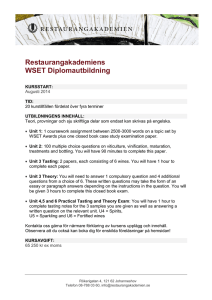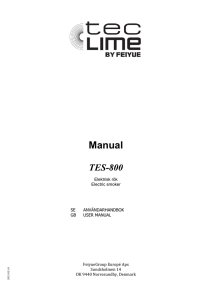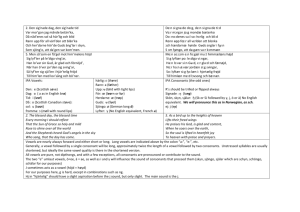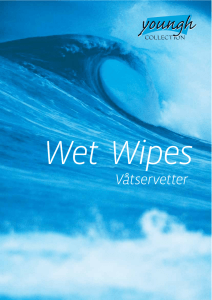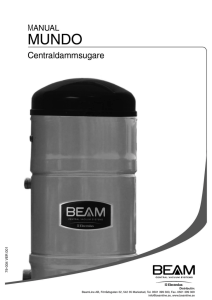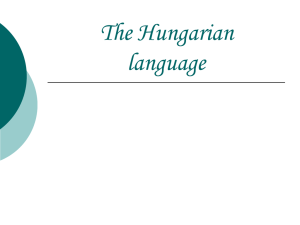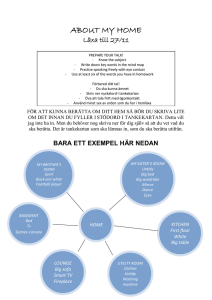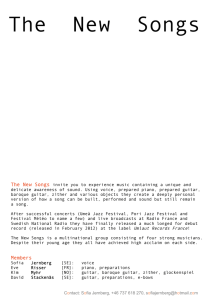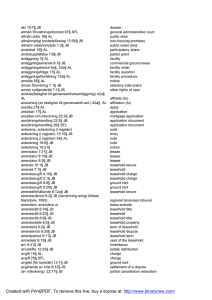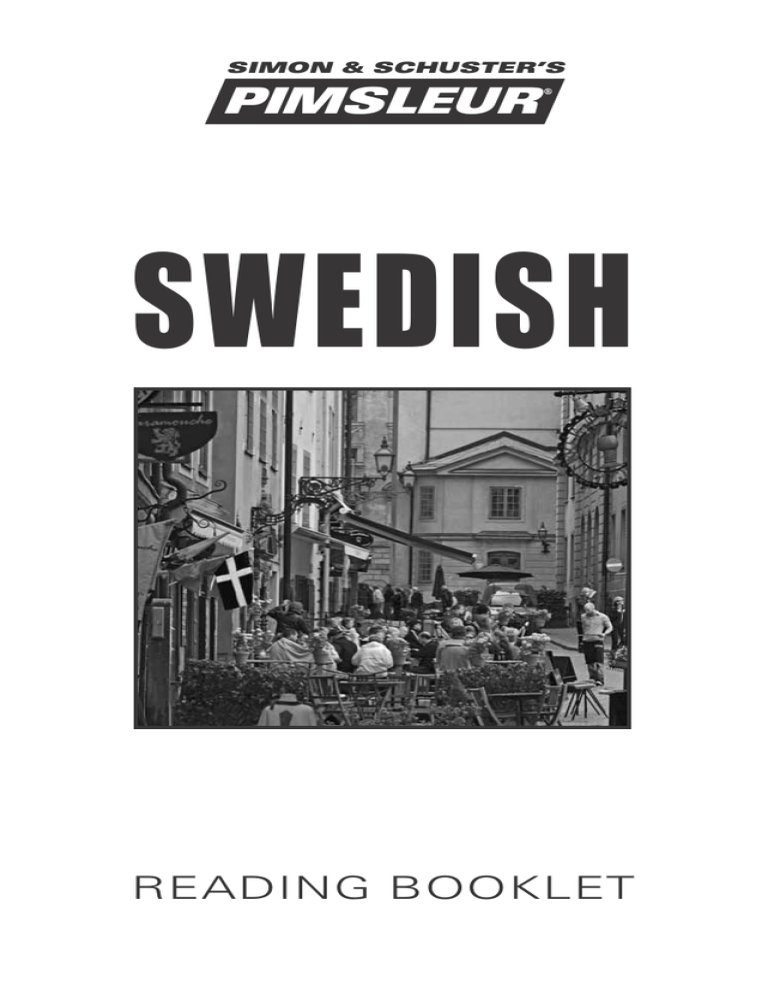
SIMON & SCHUSTER’S
PIMSLEUR
®
SWEDISH
reading booklet
Travelers should always check with their
nation's State Department for current
advisories on local conditions before
traveling abroad.
Graphic Design: Maia Kennedy
© and ‰ Recorded Program 2011 Simon & Schuster, Inc.
© Reading Booklet 2011 Simon & Schuster, Inc.
Pimsleur® is an imprint of Simon & Schuster Audio,
a division of Simon & Schuster, Inc. Mfg. in USA.
All rights reserved.
ACKNOWLEDGMENTS
SWEDISH
Voices
English-Speaking Instructor . . . . . . . . . . . . . Ray Brown
Swedish-Speaking Instructor . . . . . . . . . . Björn Nilsson
Female Swedish Speaker . . . . . . . . . . Karina Granbom
Male Swedish Speaker . . . Ramses Del Hierro Ericstam
Course Writers
Cecilia Franzel ◆ Berit S. Ahmad
Editors
Joan Schoellner ◆ Beverly D. Heinle
Reviewer
Åsa Söderling Kajic
Executive Producer
Beverly D. Heinle
Producer & Director
Sarah H. McInnis
Recording Engineers
Peter S. Turpin ◆ Kelly Saux
Simon & Schuster Studios, Concord, MA
iii
TABLE OF CONTENTS
Reading Lessons
Introduction . . . . . . . . . . . . . . . . . . . . . . . . . . . . . . . . 1
Unit Eleven . . . . . . . . . . . . . . . . . . . . . . . . . . . . . . . . 9
Unit Twelve . . . . . . . . . . . . . . . . . . . . . . . . . . . . . . . . 10
Unit Thirteen . . . . . . . . . . . . . . . . . . . . . . . . . . . . . . . 11
Unit Fourteen . . . . . . . . . . . . . . . . . . . . . . . . . . . . . . 12
Unit Fifteen . . . . . . . . . . . . . . . . . . . . . . . . . . . . . . . . 13
Unit Sixteen . . . . . . . . . . . . . . . . . . . . . . . . . . . . . . . 14
Unit Seventeen . . . . . . . . . . . . . . . . . . . . . . . . . . . . . 15
Unit Eighteen . . . . . . . . . . . . . . . . . . . . . . . . . . . . . . 16
Unit Nineteen . . . . . . . . . . . . . . . . . . . . . . . . . . . . . . 17
Unit Twenty . . . . . . . . . . . . . . . . . . . . . . . . . . . . . . . . 18
Unit Twenty-One . . . . . . . . . . . . . . . . . . . . . . . . . . . . 19
Unit Twenty-Two . . . . . . . . . . . . . . . . . . . . . . . . . . . 20
Unit Twenty-Three . . . . . . . . . . . . . . . . . . . . . . . . . . 21
Unit Twenty-Four . . . . . . . . . . . . . . . . . . . . . . . . . . . 22
Unit Twenty-Five . . . . . . . . . . . . . . . . . . . . . . . . . . . 23
Unit Twenty-Six . . . . . . . . . . . . . . . . . . . . . . . . . . . . 24
Unit Twenty-Seven . . . . . . . . . . . . . . . . . . . . . . . . . . 25
Unit Twenty-Eight . . . . . . . . . . . . . . . . . . . . . . . . . . . 26
Unit Twenty-Nine . . . . . . . . . . . . . . . . . . . . . . . . . . . 27
Unit Thirty. . . . . . . . . . . . . . . . . . . . . . . . . . . . . . . . . 29
v
SWEDISH
Introduction
The Swedish Language
Swedish is a North Germanic language spoken
by approximately ten million people, primarily
in Sweden and parts of Finland. Until World
War II, it was also spoken in parts of Latvia and
Estonia. While there are many regional dialects in
Sweden, there is a uniform and standard Swedish,
called Rikssvenska (as taught in this course), which
evolved from the central Swedish dialects spoken
around Stockholm. Swedish is similar to Danish
and Norwegian. These languages are mutually
intelligible to a certain extent, more so in written
than in spoken form.
Swedish is a descendant of Old Norse, the language spoken in Scandinavia during the Viking Era.
New vocabulary was introduced during different
eras as a consequence of religious and commercial
interaction with other cultures. “Old Swedish” is
the term used for medieval Swedish starting around
1250. The main influence at this time came from
the Roman Catholic Church. Many of the Greek
and Latin loan words stem from this period. During
the Middle Ages, a large number of German and
Dutch immigrants added new vocabulary to the
Swedish language. These new terms were mostly
SWEDISH
Introduction (continued)
associated with areas such as trade, administration,
and warfare.
The printing press and the European Reformation
mark the beginning of Modern Swedish (the 16th
through the 19th centuries). The Gustav Vasa Bible
(1541), a full translation of the Bible into Swedish,
began a movement towards a more consistent
Swedish. King Gustav Vasa printed 2000 copies of
the Bible and distributed them to churches throughout Sweden. For the first time, church services were
conducted in Swedish rather than in Latin. In the
middle of the 19th century, public school was introduced and all students were then educated in standard Swedish.
Contemporary Swedish, as it is spoken today,
dates from the early 20th century. The last major
spelling reform occurred in 1906. In the late 1960s,
a significant linguistic reform took place which is
referred to as the “du (you)-reform.” Historically,
Sweden had different ways to address people,
depending on their social status. With the liberalization of Swedish society in the 1950s and 1960s,
class distinctions became less important and “du”
became the standard way to address someone, even
in a formal context.
2
SWEDISH
Introduction (continued)
The Swedish alphabet is a Latin-based alphabet
consisting of twenty-nine letters: the same twentysix as in English plus three additional vowels (å,
ä, ö). Pronunciation, however, is quite different
from English. Swedish has certain features that are
important for proper pronunciation. These include:
the distinction between long and short vowels.
The general rule is that a vowel is “short” if it
is followed by two consonants, and “long” if
followed by one consonant.
pitch accents (tones) that give Swedish its
typical “singsong” rhythm. There are two
pitch accents: acute (falling) and grave (rising). The acute accent is usually on one syllable words, while the grave accent is on words
of more than one syllable. This pitch accent
is not marked in written Swedish and can be
learned only by listening to the spoken language. It very rarely affects the meaning of
a word.
In addition to pitch accent, Swedish polysyllabic words include a stress, usually on the first
syllable. There are exceptions to this stress rule;
3
SWEDISH
Introduction (continued)
for example, in loan words and words with certain
endings, the stress may be on the last syllable.
The Swedish language has some sounds and
sound combinations which do not exist in English
and some peculiarities of spelling. Here are some
basic guidelines.
In Swedish the so-called “soft” and “hard”
vowels affect pronunciation of three letters. A
table of these letters and changes follows:
Letter
c
g
k
Hard Vowels
a, o, u, å
c as in cat
g as in go
k as in kangaroo
Soft Vowels
e, i, y, ä, ö
c as in city
y as in yes
sh as in shoe
Other different spellings and pronunciations
include:
dj, gj, hj, and lj sound like the y in yes,
tj and kj sound like the sh in shoe,
rs sounds like the sh in shoe,
4
SWEDISH
Introduction (continued)
ch, sch, sh, sj, sk, skj, and stj make a breathy
sound like the beginning of the name Hugh.
In some parts of Sweden these letter combinations can also sound like the sh in shoe.
In addition, the sounds of the vowels ä and ö
change slightly when followed by an r. Also, the
consonants s, n, d, t, and l, when preceded by an r,
form a new, duller, merged sound.
When learning Swedish, pay close attention to
the difference between the written and spoken forms.
In the spoken language, many letters will be skipped
or reduced. For example, in speech the word och
(“and”) will sound like o (the “ch” is silent). The
letters g, d, and t at the end of a word are also usually silent or are reduced in pronunciation.
A characteristic of Swedish grammar is that
nouns have two genders, called “common” and
“neuter.” They are either en words (common gender) or ett words (neuter): for example, en bok (a
book) and ett barn (a child). To say “the,” the articles are placed after the noun as in the words boken
(the book) or barnet (the child).
5
SWEDISH
Introduction (continued)
Reading Lessons
After an initial introduction to the spoken language, reading is integrated into the program starting with Unit Eleven. In these Reading Lessons you
will learn to sound out the Swedish alphabet, beginning with short words or combinations of letters,
then progressing to words, word combinations, and
short phrases, increasingly building in length until
you will be reading complete sentences in context.
The Swedish alphabet is systematically introduced,
and you will learn to associate each letter with the
sounds of the Swedish language. You will not, at
first, be reading for meaning, but rather for sound/
symbol correlation. Eventually, when the sound
system is mastered, you will be able to look at
known vocabulary and “read for meaning.” By the
end of the Comprehensive Level I course, you will
be reading at the same level as you are speaking.
The reading items in the lessons have been
selected especially to give you practice in the
Swedish sounds and sound combinations. Your
vocabulary acquisition will begin after you’ve
learned the new, different sound system. You should
read aloud, as directed. The process of saying the
6
SWEDISH
Introduction (continued)
words out loud will reinforce and enhance your
Swedish language acquisition and will help lodge
the sounds of the Swedish language in your memory. In these Reading Lessons, you will learn to
look at the Swedish alphabet with Swedish eyes.
There are twenty Reading Lessons at the end of
the units, starting with Unit Eleven. These lessons
are also combined and provided at the end of the
course. You may choose to do the Readings along
with the units, or you may wait until you have
completed the course and do them all together.
Repeat the Reading Lessons as often as you wish.
Instructions on how to proceed with the Readings
are contained in the audio.
7
SWEDISH
Unit Eleven
1.
ta
2.
mat
3.
tak
4.
tack
5.
hatt
6.
ha
7.
bar
8.
far
9.
bra
10.
var
11.
tät
12.
väg
13.
är
14.
vägg
15.
väg / vägg
16.
äta
17.
vad
18.
här
19.
träffa
20.
Bara bra, tack.
9
SWEDISH
Unit Twelve
1.
bänk
2.
badda
3.
bäck
4.
att äta
5.
se
6.
vet
7.
debatt
8.
ett
9.
eller
10.
elva
11.
ensam
12.
kaffe
13.
kaffe eller te
14.
ut
15.
bula
16.
Du talar bra.
17.
bulle
18.
utter
19.
Uppsala
20.
Med vem?
10
SWEDISH
Unit Thirteen
1.
Vet du?
2.
Var är gatan?
3.
vatten
4.
Bara ett glas vatten.
5.
öl
6.
föl
7.
bön
8.
döma
9.
förr
10.
lönsam
11.
ja
12.
jätte
13.
djur
14.
gjuta
15.
hjälpa
16.
ljus
17.
jag
18.
därför
19.
behöver
20.
Jag heter Jan.
11
SWEDISH
Unit Fourteen
1.
ljud
2.
jams
3.
jägare
4.
hjälp
5.
gula
6.
dagar
7.
gör
8.
ger
9.
gäst
10.
år
11.
språk
12.
från
13.
åtta
14.
ålder
15.
åt / åtta
16.
tårta
17.
dörr
18.
några
19.
smörgås
20.
längre fram
12
SWEDISH
Unit Fifteen
1.
båt
2.
hej då
3.
stol
4.
bok
5.
kopp
6.
stopp
7.
god
8.
gul
9.
går
10.
fyr
11.
fyra
12.
tyst
13.
mynta
14.
gärna
15.
gör
16.
gympa
17.
kreditkort
18.
något
19.
kronor
20.
Jag har kronor.
13
SWEDISH
Unit Sixteen
1.
göra
2.
kom
3.
kul
4.
kära
5.
köpa
6.
kypare
7.
kan
8.
min
9.
kemi
10.
kind
11.
kål
12.
kjol
13.
tjugo
14.
tjock
15.
camping
16.
curry
17.
centrum
18.
cigarett
19.
cykla
20.
Jag kan köpa en kjol.
14
SWEDISH
Unit Seventeen
1.
skola
2.
tjusig
3.
Vi ses ikväll.
4.
Kör du?
5.
Vad kostar kjolen?
6.
chock
7.
chans
8.
chiffer
9.
sju
10.
sjutton
11.
sherry
12.
schampo
13.
skena
14.
skinn
15.
skynda
16.
skön
17.
skjorta
18.
stjärna
19.
Jag ska äta ...
20.
klockan sju idag.
15
SWEDISH
Unit Eighteen
1.
skicka
2.
sjal
3.
God morgon.
4.
mycket
5.
det
6.
Det är här.
7.
Ha det bra.
8.
tröjan
9.
mineralvatten
10.
Jag kan det.
11.
ljusna
12.
hjärta
13.
pengar
14.
inga
15.
många
16.
regn
17.
tidning
18.
Var ligger banken?
19.
Hur är det med dig?
20.
Jag har inga pengar.
16
SWEDISH
Unit Nineteen
1.
bod
2.
bord
3.
jätte
4.
Trevligt att träffa dig.
5.
månar
6.
morgnar
7.
dyr
8.
dyrt
9.
fyrtio
10.
med mig
11.
Vill du äta middag med mig?
12.
Ja, gärna.
13.
kurs
14.
ursäkta
15.
förstås
16.
för sent
17.
Ursäkta, men du kommer för sent.
18.
Kursen var lång.
19.
Det kostar fyrtio kronor.
20.
Det var dyrt.
17
SWEDISH
Unit Twenty
1.
måndag
2.
tisdag
3.
onsdag
4.
torsdag
5.
fredag
6.
lördag
7.
söndag
8.
adjö
9.
hotell
10.
telefon
11.
barn
12.
fort
13.
pärla
14.
Var så god.
15.
fru
16.
dyrare
17.
Men vin är dyrare.
18.
köra
19.
Jag ska inte köra.
20.
Vi ses senare.
18
SWEDISH
Unit Twenty-One
1.
Celsius
2.
Det är fjorton ...
3.
grader Celsius.
4.
Vi bor i Washington.
5.
Vi tar en taxi.
6.
zoologi
7.
quiltning
8.
Du kan inte ...
9.
dricka vin nu.
10.
utomhus
11.
sextio kronor
12.
Kom in.
13.
Är hon där borta?
14.
Lyssna på samtalet.
15.
Mycket senare.
16.
Kyrkan ligger i byn.
17.
Det samma.
18.
Vem är det?
19.
Lyssna och upprepa.
20.
Min hyra är dyr.
19
SWEDISH
Unit Twenty-Two
1.
Inte så mycket.
2.
i morgon kväll
3.
en bil
4.
Du har en liten bil.
5.
Vill du ha en kopp kaffe?
6.
fika
7.
Vi ska fika.
8.
affärerna
9.
Jag mår inte bra.
10.
Solen skiner.
11.
Skynda dig!
12.
skära
13.
Skär mig en tårtbit.
14.
Affären är stängd.
15.
Du behöver medecin.
16.
känna
17.
Jag känner honom.
18.
Jag känner mig sjuk.
19.
Har ni barn?
20.
Vi har en pojke och en flicka.
20
SWEDISH
Unit Twenty-Three
1.
min man
2.
min fru
3.
min familj
4.
Gå på restaurang.
5.
Min familj ska gå på restaurang.
6.
Vi skulle vilja äta nu.
7.
hungrig
8.
Är du hungrig?
9.
Ja. Var ligger restaurangen?
10.
Den ligger i Gamla Stan.
11.
Ursäkta, var ligger toaletten?
12.
Toaletten är där borta.
13.
Vad kostar fisken?
14.
Den kostar nittio kronor.
15.
Jag vill ha en köttbit.
16.
Vill du ha ett glas vin?
17.
Jag ska ta en öl.
18.
notan
19.
Kan vi få notan, tack?
20.
Ska vi betala dricks?
21
SWEDISH
Unit Twenty-Four
1.
tillräckligt
2.
Ljusa nätter på sommaren.
3.
Vi bor på hotell.
4.
Var ligger hotellet?
5.
Det ligger på Hornsgatan.
6.
där borta
7.
Hotellet ligger där borta på Hornsgatan.
8.
Har du bil?
9.
Ja, det är min bil, där borta.
10.
tjugosju
11.
kilometer
12.
Det är tjugosju kilometer till Stockholm.
13.
stationen
14.
Var ligger stationen?
15.
Vad kostar en biljett till Göteborg?
16.
Då behöver du inte ...
17.
så mycket bensin.
18.
Var ligger bensinstationen?
19.
Bensinen är dyr i Sverige.
20.
Är bankerna öppna nu?
22
SWEDISH
Unit Twenty-Five
1.
Kan du säga det en gång till?
2.
Vilken väg går till Stockholm?
3.
Därför att det är för sent.
4.
Hur många kilometer är det till slottet?
5.
långt
6.
Det är inte långt.
7.
Göteborg
8.
Det är längre till Göteborg.
9.
Jag behöver tänka.
10.
Jag behöver tanka.
11.
tänka / tanka
12.
använda
13.
Jag vill använda mitt bankkort.
14.
Var finns en bankomat?
15.
Där borta på Drottninggatan.
16.
Slå in din pinkod.
17.
Tryck på klar.
18.
Kortet är godkänt.
19.
Var ligger Vasamuseet?
20.
Det ligger på Djurgården.
23
SWEDISH
Unit Twenty-Six
1.
sen
2.
Sen kör du rakt fram.
3.
de
4.
De reser till Stockholm.
5.
alltid
6.
Det är alltid folk på Vasamuseet.
7.
Jag skulle vilja jobba.
8.
Det är mycket pengar.
9.
Var är vägen till Stockholm?
10.
Och ta sen vägen till vänster.
11.
Ge mig några kronor, tack.
12.
Jag kan ge dig lite pengar.
13.
Hon ger mig en bok.
14.
Vinet är till dig.
15.
Staden är stor.
16.
Gamla Stan ligger i Stockholm.
17.
Var ligger Södermalm?
18.
Åk förbi Slussen.
19.
Sen tar du till vänster.
20.
Stockholm är en vacker stad.
24
SWEDISH
Unit Twenty-Seven
1.
Jag tror inte det.
2.
Hur säger man?
3.
vädret
4.
Hur är vädret?
5.
regnar
6.
Det regnar idag.
7.
Det snöar.
8.
I morgon ska det hagla.
9.
På lördag ska det bli soligt.
10.
temperaturen
11.
Vad är temperaturen idag?
12.
Blåser det också?
13.
Det blåser bara lite.
14.
Fryser du?
15.
Nej, jag fryser inte.
16.
hälsa på
17.
Jag ska hälsa på mina vänner.
18.
Åker du om det snöar?
19.
Det är vackert väder.
20.
I morgon ska det sluta regna.
25
SWEDISH
Unit Twenty-Eight
1.
Är det bra väder?
2.
Det är en vacker vår.
3.
Det är ganska varmt.
4.
Jag svettas.
5.
Det är kallt.
6.
Hösten är kylig.
7.
Det snöar och blåser.
8.
Snart är det sommar.
9.
Jag tycker inte om vintern.
10.
Vilken årstid tycker du bäst om?
11.
Jag tycker bäst om hösten.
12.
gula och röda
13.
På hösten är träden gula och röda.
14.
Karin tycker om vintern.
15.
Det kan vara mycket snö på vintern.
16.
Många svenskar tycker om att åka skidor.
17.
Lars tycker bäst om våren.
18.
På våren är det ljust igen.
19.
Och så kommer sommaren.
20.
Det är ljusa nätter på sommaren.
26
SWEDISH
Unit Twenty-Nine
1.
Vart vill du resa?
2.
Jag vill resa till Stockholm.
3.
Kanske vi kan åka tillsammans?
4.
Först åker vi till Lundagatan.
5.
Sen tar vi tunnelbanan till Gamla Stan.
6.
Nu åker vi till Slussens tunnelbane station.
7.
Jag bor på Bellmansgatan. Var bor du?
8.
Jag bor på Götgatan.
9.
Mikael skulle vilja köra till Fiskargatan.
10.
Han tar vägen till vänster.
11.
Ska vi äta middag?
12.
Det finns en bra restaurang vid Mosebacke
torg.
13.
Jag vill bara ha Billys Pan Pizza.
14.
Idag ska Lisbeth hälsa på en vän på
Tomtebogatan.
15.
Hon ska hälsa på sin mor i Äppelviken i
morgon.
16.
På tisdag ska hon träffa flickorna på
Kvarnen.
27
SWEDISH
Unit Twenty-Nine (continued)
17.
Då går vi till ett café i Gamla Stan.
18.
Kanske vi kan ta en kaffe på Mellqvists
Kaffebar?
19.
Jag vill ha en tidning.
20.
Kan jag få Svenska Morgon-Posten, tack?
28
SWEDISH
Unit Thirty
1.
Vad vill du göra nu?
2.
Inte vet jag.
3.
Vad vill du göra?
4.
Kanske vi kan ta något att dricka
tillsammans.
5.
Vill du ha ett glas juice? Kanske äppeljuice?
6.
Jag drack äppeljuice ...
7.
hos mig i morse.
8.
Vill du ha mineralvatten?
9.
Jag drack det också.
10.
Skulle du vilja ha kaffe eller te?
11.
Jag drack kaffe i morse också.
12.
Och jag drack en kopp te.
13.
Senare drack jag ett glas öl.
14.
OK, men jag skulle vilja ha något att dricka
på Teatercaféet.
15.
Vad vill du göra då?
16.
Å, jag vet vad jag vill göra nu.
17.
Vad vill du göra?
18.
Jag skulle vilja gå på toaletten.
29
For more information, call
1-800-831-5497 or visit us
at www.Pimsleur.com

